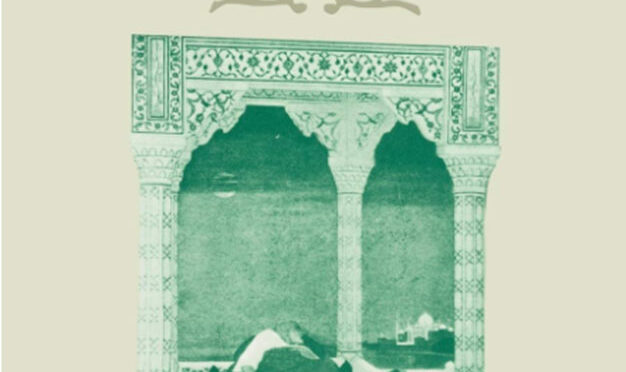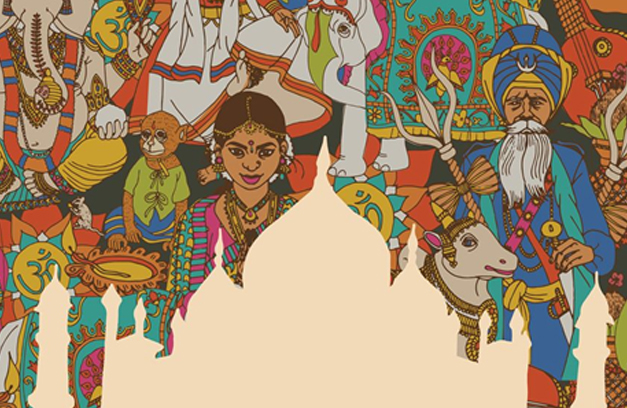Book: The Making of a new ‘Indian’ Art, Artists, aesthetics and nationalism in Bengal 1850-1920
Posted on : February 15, 2024Author : Tapati Guha Thakurta

The art world of Colonial Calcutta, as reflected by Tapati Guha Thakurta in her exquisite illustrations and engaging narrative, interweaves various wefts and warps of discourses, practices, professions, literature and traditions that shaped the essence of ‘Indian’ art and aesthetics. Jaunting the 1800s to the 1900s, the book explores the ever-evolving definition of ‘Indianness’ from pluralistic lenses of commercialisation, indigeneity, nationalism and Orientalism.
With the institutionalisation of Bengal’s art world through the Government School of Art in 1854, a substantial transformation in taste materialised in Bengal. The emerging middle class and gentry embraced the sophisticated oil paint schemes and meticulous finish with heightened chiaroscuro. With court patronage preferring British realist, illusionist style, Bengal’s painters redesigned their standards that confirmed the West, transitioning from artisans to trained artists, rather mere copyists aiding British ethnographic documentation. Disrupting the traditional skills and aspirations of Indian artists from Kalighat patuas, Batt-tala painters to royal painters, conformity to the West became integral to earn from art patrons to bazaar art.
Art school painters with superior technical acumen entered the popular circuit of mass production blurring the lines between high and low art. Setting up of printing technologies like Royal Lithographic Press in 1857 reshaped the popular visual market to a realistic art school-derived skill attracting the middle class. Followed up by indigenous independent art enterprises like Calcutta Art Studio, the popular content of bazaar art were appropriated through Western conventions. However, interweaving multiple strands of nationalist aesthetics homogenised ‘Indian’ art blurring the differences between “Indian” and “Western”.
In 1890s, Ravi Varma emerged to refine artistic sensibility, superseding the prevailing debased mythological pictures from the market. Emphasising more on ‘form’, ‘spirit’, ‘emotion’ rather than content, he propagated a unique nationalist intellectual and aesthetic self-awareness. Balendranath Tagore stressed the demarcation of indigenous high art, drawing from the rich tapestry of popular Indian ideas, images, feelings, and religious values. However, falling under the critique of academic realism, Calcutta Art Studio pictures and bazaar art were often relegated to lack of ‘Indian’ base.
Magazine literature rode shifting tastes on Indian art and aesthetics towards a new nationalistic ideological intent. The search for progress in Indian civilization looking through history varied from West Sanskrit aesthetics to Graeco-Roman architecture. The essence of original ‘Indian’ fine arts, according to Rajendralal Mitra, found its roots in the glorious past of an ‘Aryan’ civilization. Magazines like Shilpa Pushpanjali and Bharati, curated by the Tagore family, emphasised beauty and bhava (emotion) as succeeding aesthetics of national art emanated from creative sensibility than sterile Western academia.
The ensuing decade perceived a traversing shift in aesthetic preferences from Ravi Varma to a new group of Indian-style painters, redefining ‘Indian Art’ as an anatomical perfection synchronous with intense feeling. This universal language aimed at transcending regional, linguistic, and cultural divides strengthening national unity. Through magazines like Pradip and Prabasi, the Bengal art literary habitus was instilled with a conscious nationalist motivation. Conversely, Orientalists fixated the image of India as an abstracted essentialist entity, encapsulated within an idealised past. Refashioning the Indian aesthetics and national art, Abanindranath Tagore succeeded Ravi Varma as the true artistic revival of Modern India.
Several reformist art world global figures like E.B. Havell, Coomaraswamy, Okakura and Sister Nivedita led to the reassertion of Indian fine arts’ greatness and a new identity as a ‘national’ art. Havell and Coomaraswamy embodied anti-industrial ethics and craft idealism, blurring distinctions between fine and applied art. Craftsmanship was no more just a skill but ‘a mode of thought’ and a way of life. The reformists urged the global to look beyond the mainstream decorative and absorb the abstract spirit of eastern artistic thought, providing ensuing literature like “Indian sculpture and painting” (1905), “Essays in National Idealism” (1909) and “Art and Swadeshi” (1912), “The Ideals of the East”. Indian philosophy and religion were given a central role bolstering India’s nationalist pride in broader Asian heritage. Their influence resonated with Bengal in shaping perceptions of cultural identity, spirituality, and the preservation of artistic heritage. The dominance of Havell, Coomaraswamy, and Nivedita’s scholarship highlighted the independent evolution of Indian art through an exclusive ‘inner’ reserve of aesthetic idealism, propagating a metaphysical image of Indian art.
Abanindranath underlined the conjoined product of artist, observer and critic as a disciplined worship, devotion, and dedication, placing bhava (personal vocation) over karigari (trained western professional). Entailing detailed perceptions from Varnika-bhangam raised several critics questioning the compatibility of Academic conventions with Indian emotions and imagery.
Indian Painting emerged with significant keynotes of gold leaf ornamental paintings, miniature paintings, and shadow blending to showcase contoured bodyline stipulating the naturalistic pose. The Indianization of the Government School of Art with growing art literary culture widened the mass consciousness, giving rise to several salons like Bichitra studio. The formal foundation of Kalabhavan in 1920 embodying nationalist idealism and self improvement escalated the rise of Neo-Bengal school artists who envisioned their mission of national regeneration.
What sets the book apart is a nuanced exploration of how each wave of societal transformation renegotiated ‘Indian’ in content and spaces. The Baithak-khana predominated by men mirrors an exclusive setting of high ideals of artistic discourse where male viewpoints shape what is culturally sophisticated. Throughout Calcutta art, the woman’s body is arranged in a way that it is to be displayed to the man looking in the picture. The Andar-mahal consigns itself to mythological pictures implying a dismissive stance given to the feminine taste discriminating the portrayal of women and their narratives in art. The moral codification of ‘idealised Hindu woman’ prototype through Hindu mythological narratives constantly legitimised the identity of a woman and her world as interned in self-sacrifice, unflagging wifely devotion by observing ritual and cultural traditions. This gender-based partition reinforces societal norms, sidelined women’s contributions to art, confining their perspectives and creations to spaces considered less noteworthy. The notable absence of representation of women artists except Sunayani Devi and Pratima Devi in the colonial Bengal art scene highlights intersections of caste, class and gender within the art world of colonial Calcutta.
Author: Tapati Guha Thakurta
Published by: Press Syndicate of the University of Cambridge, The Pitt Building, Trumpington Street, Cambridge.
Publication Date: 1992
Length: 352 Pages
Price: Rs. 3,896
Udita Ghatak,
Intern, Asia in Global Affairs.
The originality of the content and the opinions expressed within the content are solely the author’s and do not reflect the opinions and beliefs of the website.





Leave a Reply